Attila the Hun › Constantinople » Ancient origins
Articles and Definitions › Contents
- Attila the Hun › Who Was
- Constantinople › Antique Origins
Ancient civilizations › Historical and archaeological sites
Attila the Hun › Who Was
Definition and Origins
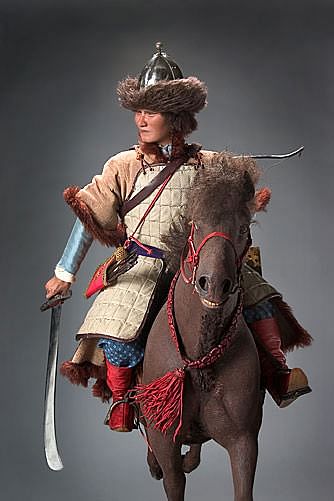
Attila the Hun (reigned 434-453 CE) was the leader of the ancient nomadic people known as the Huns and ruler of the Hunnic Empire, which he established. His name means "Little Father" and, according to some historians, may not have been his birth name but "a term of affection and respect conferred on his accession" (Man, 159). This name was synonymous with terror among his enemies and the general populace of the territories that his armies swept through.
Attila 's incursions into the regions of Germania drove the populations across the borders of the Western Roman Empire and contributed to its decline in the late 5th century CE. The influx of the Visigoths, in particular, and their later revolt against Rome, is considered a significant contributor to Rome's fall. The Visigoth victory over the Romans at the Battle of Adrianople in 378 CE was an event the Roman military never fully recovered from. Further, that victory encouraged the Huns to join the Visigoths (their former adversaries) in plundering Roman territories. The apparent weakness of Rome encouraged Attila, once he became leader of the Huns, to make and break treaties (such as the Treaty of Margus in 439 CE) without fear of consequences, and his wide-scale destruction of Roman cities and towns met with little or no resistance for the most part, making it clear that the Roman army was no longer the kind of invincible fighting force it once had been.
ATTILA WAS A BRILLIANT HORSEMAN & MILITARY LEADER, & HE HELD HIS EMPIRE TOGETHER THROUGH THE STRENGTH OF HIS INDIVIDUAL PERSONALITY.
Attila's ability to command a vast army of warriors (often comprised of different tribes such as the Alans, Alemanni, and Ostrogoths) was also in contrast to Roman generals of his time, who had difficulty keeping their non-Roman contingents under control (most clearly seen in the Roman general Litorius' campaign against the Goths in 439 CE, in which he could not stop his Hun allies from raiding the regions they passed through). Attila was a brilliant horseman and military leader, possessed a commanding presence, and held his empire together through the strength of his individual personality. He not only made the Huns the most effective fighting force of the time, but he also built a vast empire from virtually nothing in less than ten years. At its height, this empire stretched from central Asia across to modern-day France and down through the Danube Valley. After he died in 453 CE, his sons tried to hold his empire together but failed, and it broke apart by 469 CE.
EARLY LIFE & RISE TO POWER
Attila's date and place of birth is unknown. The historian Peter Heather writes:
Our ignorance of the Huns is astounding. It is not even clear what language they spoke. Most of the linguistic evidence we have comes in the form of personal names - Hunnic rulers and their henchmen - from the time of Attila. But by then, Germanic had become the lingua franca of the Hunnic Empire and many of the recorded names are either certainly or probably Germanic. Iranian, Turkish, and Finn-Ugrian (like the later Magyars) have all had their proponents [for the language of the Huns], but the truth is that we do not know what language the Huns spoke and probably never will. The direct evidence we have for the motivations and forms of Hunnic migration is equally limited. According to [the ancient writer] Ammianus, there was nothing to explain `The origin and seedbed of all evils: the people of the Huns who dwell beyond the Sea of Azov near the frozen ocean, and are quite abnormally savage.' They were just so fierce that it was natural for them to go around hitting people.Similar images of Hunnic ferocity are found in other sources (209).

Attila the Hun
Although in the present day, his mother's name is sometimes given as Hungysung Vladdysurf, her name is actually not known, and this name is considered a recent fabrication. His father's name was Mundzuk, and his uncle, Rugila (also known as Rua and Ruga), was king of the Huns. As a young man, Attila, and his older brother Bleda (also known as Buda), were taught archery, how to ride and care for horses, and how to fight. They were also taught Latin and Gothic to enable them to do business with the Romans and Goths. Historians are divided on how much can be said with certainty regarding Attila's early years, however, and some (such as John Man) claim that nothing is known of his early life, not even his birth name, and nothing should be inferred based on his later accomplishments.
Whether Rugila had sons to succeed him is not known, and Mundzuk seems to have died early in the boys' lives, so it appears that either Bleda or Attila would be Rugila's heir and succeed him as king; therefore, their education and instruction in warfarewould have prepared them for the responsibilities of leadership (although some historians, such as Christopher Kelly, suggest that Attila and Bleda may have assassinated Rugila's sons on campaign to assume power and, again, Man claims no such assumptions should be made). Both boys are thought to have been present at Hun war councils and negotiations from an early age. Even before Attila became king, the Huns were a formidable fighting force, although they would become more so later under his rule. They were expert horsemen whose steeds, according to ancient reports, would actually fight for them in battle with teeth and hooves. The historian and former US Army Lt. Col. Michael Lee Lanning describes the Hun army thusly:
Hun soldiers dressed in layers of heavy leather greased with liberal applications of animal fat, making their battle dress both supple and rain resistant. Leather-covered, steel-lined helmets and chain mail around their necks and shoulders further protected the Hun cavalrymen from arrows and sword strikes. The Hun warriors wore soft leather boots that were excellent for riding but fairly useless for foot travel. This suited the soldiers, for they were much more comfortable in the saddle than on the ground (62).
When Rugila died on campaign against Constantinople in 433 CE, leadership passed to Attila and Bleda. Lanning writes,
Attila inherited an army that had waged war against its neighbors, particularly the Eastern Roman Empire, for hundreds of years. Ruga's operations against the Romans had been so successful that Rome paid the Huns an annual tribute to maintain the peace (61).
The brothers ruled jointly - each in control of their own regions and populace - and, as Lanning notes, frequently dealt with the Eastern Roman Empire, who formerly had paid the Huns as mercenaries to take care of the other tribes harassing Rome's boundaries, but now found they were paying to keep the Huns from invading.
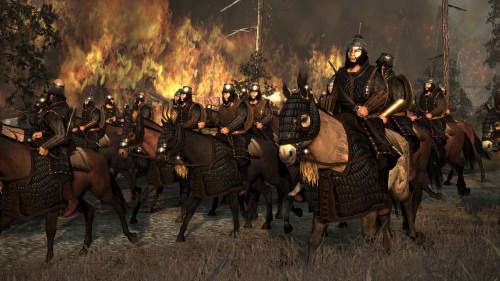
Army of Attila the Hun
Attila and Bleda together brokered the Treaty of Margus with Rome in 439 CE. This treaty continued the precedent of Rome paying off the Huns in return for peace, which would be a more or less constant stipulation in Roman-Hun relations until Attila's death. An agreement between the Huns and the Romans had already been brokered in 435 CE by the Roman general Flavius Aetius (391-454 CE), who had lived among the Huns as a hostage in his youth, spoke their language, and employed them to his advantage in his various power struggles in the empire. The Treaty of Margus expanded on Aetius' treaty: the Romans promised to return all Hun refugees who had fled into Roman territories, would not enter into pacts or treaties with enemies of the Huns, would establish fair trading rights and, of course, would "make an annual payment of seven hundred pounds of golddirectly to Attila and Bleda" (Kelly, 118). For their part, the Huns promised not to attack Rome, not to enter into pacts or treaties with Rome's enemies, and to defend the Danube frontier and the provinces of the empire.
The treaty concluded, the Romans were able to withdraw their troops from the Danube region and send them against the Vandals who were threatening Rome's provinces in Sicily and North Africa. The Huns turned their attention east after the Margus Treaty and warred against the Sassanid Empire but were repelled and driven back toward the Great Hungarian Plain, which was their home base. With the Roman troops who once guarded the border now deployed to Sicily, the Huns saw an opportunity for easy plunder. Kelly writes, "As soon as Attila and Bleda received reliable intelligence that the fleet had left for Sicily, they opened their Danube offensive" (122). They claimed the Romans had violated the Margus treaty by not sending back all the Hun refugees in Roman territory and, further, claimed that a Roman bishop had made a secret trip into Hun territory to desecrate Hun graves and steal valuable grave goods - and they wanted this bishop turned over to them.
ATTILA & BLEDA DROVE THEIR ARMIES THROUGH THE BORDER REGIONS & SACKED THE CITIES OF THE PROVINCE OF ILLYRICUM.
Theodosius sent his general Flavius Aspar to try to negotiate with Attila and Bleda, but it was no use. Attila showed Aspar recently disturbed graves, but there was no way of telling whose graves they were, who had disturbed them, or what may have been taken from them. With no proof of a crime, Aspar refused to turn the bishop over to the Huns and, further, claimed he had no knowledge of Hun refugees hiding from Attila and Bleda on Roman soil. The Huns insisted, Aspar could not comply, and negotiations reached a stalemate. Aspar returned to Constantinople to report these developments to Theodosius but does not seem to have felt there was any imminent threat of a Hun invasion. The refugees in question were Huns who had fled Attila's rule, and who he wanted returned before they could stir up rebellion against him. As it turned out, there were still a number of refugees living in Roman territory (who would later be handed over), and the bishop Attila wanted most likely did rob the graves and would later betray the city of Margus to the Huns so, as it happened, it would have been better if Aspar had simply handed him and the refugees over in the first place.
He did not do so, however, and considering the treaty broken, Attila mobilized for war. As Aspar headed back toward Constantinople in the summer of 441 CE, Attila and Bleda drove their armies through the border regions and sacked the cities of the province of Illyricum, which were very profitable Roman trade centers. They then further violated the Treaty of Margus by riding on to that city and destroying it (with the help of the bishop who opened the gates for them). Theodosius II (401-450 CE) then declared the treaty broken and recalled his armies from the provinces to stop the Hun rampage. Attila and Bleda responded with a full-scale invasion, sacking and destroying Roman cities all the way to within 20 miles of the Roman capital of Constantinople. The city of Naissus, birthplace of the emperor Constantine the Great, was razed and would not be rebuilt for a century afterwards. The Huns had learned a great deal about siege warfare from their time serving in the Roman army and expertly put this knowledge to use, literally wiping whole cities, such as Naissus, off the map. Their offensive was all the more successful because it was completely unexpected. Theodosius II had been so confident that the Huns would keep the treaty that he refused to listen to any council that suggested otherwise. Lanning comments on this, writing :
Attila and his brother valued agreements little and peace even less. Immediately upon assuming the throne, they resumed the Hun offensive against Rome and anyone else who stood in their way. Over the next ten years, the Huns invaded territory which today encompasses Hungary, Greece, Spain, and Italy. Attila sent captured riches back to his homeland and drafted soldiers into his own army while often burning the overrun towns and killing their civilian occupants. Warfare proved lucrative for the Huns but wealth apparently was not their only objective.Attila and his army seemed genuinely to enjoy warfare, the rigors and rewards of military life were more appealing to them than farming or attending livestock (61).
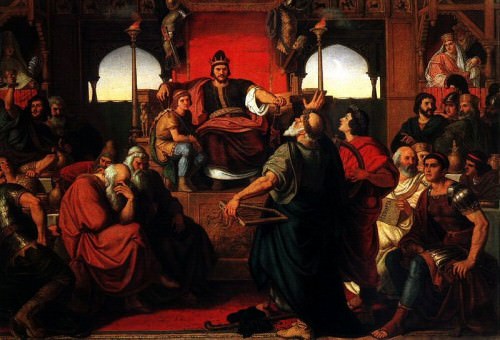
Feast of Attila
Theodosius II, realizing he was defeated but unwilling to admit total defeat, asked for terms; the sum Rome now had to pay to keep the Huns from further destruction was more than tripled. The historian Will Durant writes, "Theodosius II of the Eastern Empire and Valentinan III of the Western, both paid him tribute as a bribe to peace, disguising it among their peoples as payments for services rendered by a client king" (39). After their Danube Offensive, Attila and Bleda led their troops back home to the Great Hungarian Plain, where Bleda then vanishes from the historical record. Kelly cites "the most reliable Roman account", Priscus, who writes that three years after the offensive, "Bleda, king of the Huns, was assassinated as a result of the plots of his brother Attila" (129). Other scholars have suggested that Bleda may have been killed on campaign but, however he died, in 445 CE, Attila became the sole leader of the Huns and the most powerful military commander in Europe.
ATTILA'S EARLY REIGN & HONORIA'S PROPOSAL
The historian Jordanes (6th century CE), who wrote the only ancient account of the Goths still extant, includes their interactions with the Huns, describing Attila at length:
He was a man born into the world to shake the nations, the scourge of all lands, who in some way terrified all mankind by the rumors noised abroad concerning him. He was haughty in his walk, rolling his eyes hither and thither, so that the power of his proud spirit appeared in the movement of his body. He was indeed a lover of war, yet restrained in action; mighty in counsel, gracious to suppliants, and lenient to those who were once received under his protection. He was short of stature, with a broad chest and a large head; his eyes were small, his beard was thin and sprinkled with gray. He had a flat nose and a swarthy complexion, revealing his origin (Jordanes, 102).
Although Attila is almost always represented as a vicious warrior on horseback, slaughtering the multitudes, he was actually a more complex individual, as the Roman writer Priscus, who actually met and dined with Attila, presents him. Historian Will Durant (following the descriptions from ancient accounts like those of Priscus) writes of Attila:
He differed from the other barbarian conquerors in trusting to cunning more than to force. He ruled by using the heathen superstitions of his people to sanctify his majesty; his victories were prepared by the exaggerated stories of his cruelty which perhaps he had himself originated; at last even his Christian enemies called him the "scourge of God" and were so terrified by his cunning that only the Goths could save them. He could neither read nor write, but this did not detract from his intelligence. He was not a savage; he had a sense of honor and justice, and often proved himself more magnanimous than the Romans. He lived and dressed simply, ate and drank moderately, and left luxury to his inferiors, who loved to display their gold and silver utensils, harness, and swords, and the delicate embroidery that attested the skillful fingers of their wives. Attila had many wives, but scorned that mixture of monogamy and debauchery which was popular in some circles of Ravenna and Rome.His palace was a huge loghouse floored and walled with planed planks, but adorned with elegantly carved or polished wood, and reinforced with carpets and skins to keep out the cold (39).
Among the "heathen superstitions" Durant notes is the war sword Attila carried, which he claimed was left for him by the Roman god of war, Mars. This sword, according to Jordanes, was discovered by accident:
When a certain shepherd beheld one heifer of his flock limping and could find no cause for this wound, he anxiously followed the trail of blood and at length came to a sword it had unwittingly trampled while nibbling the grass. He dug it up and took it straight to Attila. He rejoiced at this gift and, being ambitious, thought he had been appointed ruler of the whole world, and that through the sword of Mars supremacy in all wars was assured to him (102).
ATTILA SAW ROME AS A FEEBLE ADVERSARY & HE AGAIN INVADED THE REGION OF MOESIA, DESTROYING OVER 70 CITIES.
Attila saw Rome as a feeble adversary and so, starting in 446 or 447 CE, he again invaded the region of Moesia (the Balkan area), destroying over 70 cities, taking survivors as slaves, and sending the loot back to his stronghold at the city of Buda (possibly Budapest in present-day Hungary, though this claim has been contested by some historians). He was considered invincible and, in Durant's words, "having bled the East to his heart's content, Attila turned to the West and found an unusual excuse for war" (40). In 450 CE, Valentinian's sister, Honoria, was seeking to escape an arranged marriage with a Roman senator and sent a message to Attila, along with her engagement ring, asking for his help. Although she may never have intended anything like marriage, Attila chose to interpret her message and ring as a betrothal and sent back his terms as one half of the Western Empire for her dowry. Valentinian, when he discovered what his sister had done, sent messengers to Attila telling him it was all a mistake, and there was no proposal, no marriage, and no dowry to be negotiated. Attila asserted that the marriage proposal was legitimate, that he had accepted and would claim his bride, and mobilized his army to march on Rome.
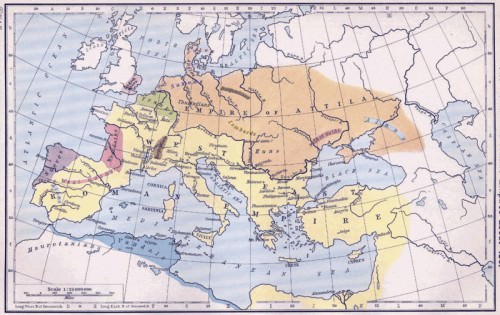
Empire of Attila the Hun
GAUL & BATTLE OF THE CATALUANIAN PLAINS
In 451 CE he began his conquests with an army of probably about 200,000 men, although sources, such as Jordanes, set the number higher at half a million. They took Gallia Belgica province (modern-day Belgium) easily and moved on to ravage the land. The only time Attila had been turned back from a conquest was by the Sassanids, and his reputation for slaughter and invincibility preceded him as he moved through Gaul. Durant writes,
All Gaul was terrified; here was no civilized warrior like Caesar, no Christian... this was the awful and hideous Hun, the flagellum dei [Scourge of God], come to punish Christian and pagan alike for the enormous distance between their professions and their lives (40).
The reputation of the Huns for brutality and indiscriminate slaughter was well known and sent the people of the land fleeing for their lives with whatever they could carry. The Roman writer Ammianus Marcellinus (330-391 CE) wrote of the Huns in his History of Rome :
The nation of the Huns surpasses all other barbarians in wildness of life. And though [the Huns] do just bear the likeness of men (of a very ugly pattern), they are so little advanced in civilization that they make no use of fire, nor any kind of relish, in the preparation of their food, but feed upon the roots which they find in the fields, and the half-raw flesh of any sort of animal. I say half-raw, because they give it a kind of cooking by placing it between their own thighs and the backs of their horses. When attacked, they will sometimes engage in regular battle. Then, going into the fight in order of columns, they fill the air with varied and discordant cries. More often, however, they fight in no regular order of battle, but by being extremely swift and sudden in their movements, they disperse, and then rapidly come together again in loose array, spread havoc over vast plains, and flying over the rampart, they pillage the camp of their enemy almost before he has become aware of their approach. It must be owned that they are the most terrible of warriors because they fight at a distance with missile weapons having sharpened bones admirably fastened to the shaft. When in close combat with swords, they fight without regard to their own safety, and while their enemy is intent upon parrying the thrust of the swords, they throw a net over him and so entangle his limbs that he loses all power of walking or riding (XXXI.ii.1-9).
The Hun army was one enormous cavalry unit that struck their adversaries quickly, neither asking for, nor offering, any mercy.Lanning writes:
Relying on mobility and shock effect, Attila rarely committed his soldiers to close, sustained combat. He preferred to approach his enemy using the terrain to hide his troops until he was within arrow range. While one rank fired at high angles to cause the defenders to raise their shields, another fired directly into the enemy lines. Once they had inflicted sufficient casualties, the Huns closed in to finish off the survivors (62).
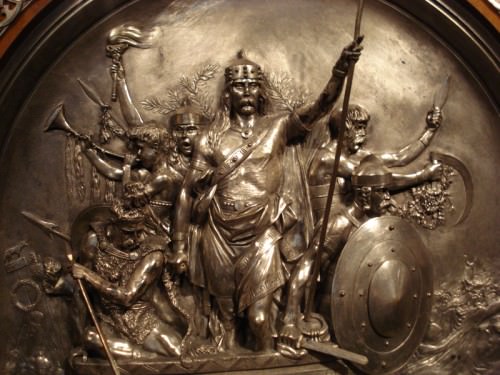
Victory of Merovech at the Battle of Catalaunian Fields
It is little wonder that no general was especially eager to engage the Hun forces under Attila. Kelly notes how the Huns "appeared as if from nowhere and melted away, leaving only destruction behind them. It was impossible to establish an effective early-warning system" (38). Attila took Trier and Metz without opposition, massacred the citizens, and then rode on, destroying everything in his path. He was finally met in battle by the combined forces of the Romans under Flavius Aetius, who understood Hun strategy and tactics, and the Visigoths under Theodoric I (reigned 418-451 CE) on the Cataluanian Plains.This engagement is known as the Battle of Cataluanian Fields or the Battle of Chalons and has been described as one of the bloodiest military conflicts in history and the first time Attila's forces were halted in an invasion of Europe. Historian Jack Watkins describes the battle:
The Romans, occupying the high ground, quickly succeeded in pushing the Huns back in confusion, and Attila had to harangue them to return to the fight. During fierce hand-to-hand fighting, King Theodoric of the Visigoths was killed. But rather than discouraging the Visigoths, their king's death enraged them and they fought with such spirit that the Huns were driven back to their camp as night fell. For several days the Huns did not move from their encampment, but their archers succeeded in keeping the Romans at bay. The desertion of the frustrated Visigoths allowed Attila to withdraw his army from the battlefield, and with his wagons of booty intact. The Romans did not pursue him; but his aura of invincibility had been shattered (85).
THE CAMPAIGN IN ITALY
Although Attila had been stopped in his invasion, he had hardly been defeated. The Romans claimed the victory, however, and returned to their homes in the hope that Attila would now harass someone else. In 452 CE, though, he returned to invade Italy and claim the bride who had promised him her hand in marriage. Here, as in Gaul, he spread a wide swath of destruction and so completely sacked the city of Aquileia that not only would it never rise again, but no one even knew where it had stood.The people of Italy, as the Gauls before them, were terrified of the Hun invasion but now, unlike the year before, Aetius did not have an army of sufficient force to stop Attila. Whole populations fled their cities and villages for safer regions and, in fact, this was how the city of Venice came to rise from the marshes to become the "City of Bridges" (among other names), as it is known as in the present day. In flight from Attila's army, people took refuge on what solid ground they could find in the watery regions they felt Attila would bypass. They chose wisely, in that Attila's forces avoided the lagoons and marched on toward more attractive grounds.
VALENTINIAN SENT POPE LEO I WITH A DELEGATION TO SEEK TERMS FROM ATTILA, BUT THE DETAILS OF THAT MEETING ARE UNKNOWN.
For reasons no one knows, the Huns stopped at the Po River. A famine had been plaguing Italy for the better part of two years, and quite possibly Attila had simply run out of supplies. It has also been suggested that plague had broken out in Attila's army, which forced him to abandon his plans. Further, there is the suggestion that his men cautioned him against continuing on to sack Rome. The Gothic commander Alaric I (reigned 394-410 CE) had sacked Rome in 410 CE and died shortly afterwards;superstition suggested Alaric's death was a direct result of his assault on such a prestigious city. It is also possible that some kind of peace was agreed to between Attila and Rome. Valentinian sent Pope Leo I with a delegation to seek terms from Attila, but the details of that meeting are unknown. All that is clear is that, following the meeting with Leo I and his delegates, Attila turned back and retreated to his stronghold in Hungary.
DEATH & LEGACY
Whether he remembered Honoria and the dowry is unknown (Durant, and others, claim he threatened to return to Italy for Honoria unless she was sent to him, but this is not clear from the primary sources), but he soon took a new, young wife, in 453 CE, named Ildico. Durant writes, "He celebrated the wedding with an unusual indulgence in food and drink. On the morrow he was found dead in bed beside his young wife; he had burst a blood vessel, and the blood in his throat had choked him to death" (40-41). As with Alexander the Great, alternative versions of Attila's death have been suggested, but Durant's version follows that of Priscus, which is the first given and considered the most reliable. Other versions include assassination by Ildico, a conspiracy involving the emperor of the East, Marcian (450-457 CE), who had Attila killed, and accidental death by alcohol poisoning or esophageal hemorrhage from drinking too much.
The entire army fell into intense grief over the loss of their leader. Attila's horsemen smeared their faces with blood and rode slowly, in a steady circle, around the tent which held his body. Kelly describes the aftermath of Attila's death:
According to the Roman historian Priscus of Panium, they [the men of the army] had cut their long hair and slashed their cheeks "so that the greatest of all warriors should be mourned not with tears or the wailing of women but with the blood of men." Then followed a day of grief, feasting, and funeral games; a combination of celebration and lamentation that had a long history in the ancient world. That night, far beyond the frontiers of the Roman empire, Attila was buried. His body was encased in three coffins; the innermost covered in gold, a second in silver, and a third in iron. The gold and silver symbolized the plunder that Attila had seized while the harsh gray iron recalled his victories in war (6).
According to legend, a river was then diverted, Attila buried in the river's bed, and the waters then released to flow over it covering the spot. Those who had taken part in the funeral were killed so that the burial place might never be revealed.According to Kelly, "these, too, were honorable deaths", in that they were part of the funeral honors for the great warrior who had brought his followers so far and accomplished so much for them.
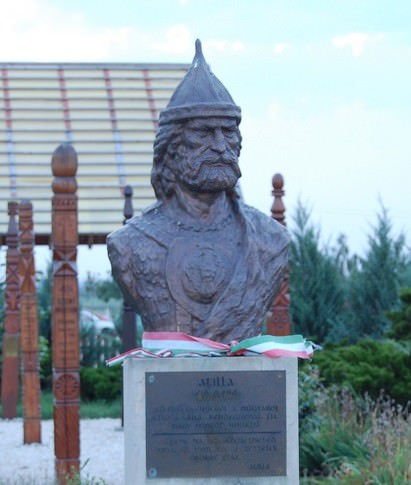
Attila the Hun
Following his funeral, his empire was divided among his sons who fought with each other for the greatest share, squandered their resources, and allowed the kingdom to fall apart. By 469 CE, only 16 years after Attila's death, the empire was gone.Attila's memory, however, lives on as one of the greatest military leaders of all time. He has been depicted since his death as the epitome of a warrior-king, and recent portrayals follow this traditional image. Dramatic feature films which reference him, even in passing, present him as a powerful warrior, and even in the Hollywood comedy Night at the Museum, from 2006 CE, Attila the Hun is depicted as a formidable force. Lanning writes:
Attila the Hun was the greatest battle captain of his age, his reputation striking terror in his enemies who both feared and respected the Scourge of God. More than fifteen hundred years later, his name remains synonymous with aggressive cavalry and the warrior ethos (63).
In March of 2014 CE it was reported that Attila's tomb had been discovered in Budapest, Hungary, which is thought to now comprise part of Attila's capital of Buda. The find generated a great deal of interest, and one of the researchers was even quoted in reports as saying, "In fact, this definitely seems to be the resting place of the almighty Attila, but further analysis needs to be done to confirm it.” Further analysis - by others not on the team that allegedly discovered the tomb - has revealed the claim to be a hoax. Although scholars have often been sceptical of the story of Attila being buried beneath a river, there is precedent for this. The Mesopotamian king Gilgamesh was also said to have been buried beneath a river, the Euphrates River, and this was long considered a myth. In April of 2003 CE, however, a German team of archaeologists claimed to have discovered the Tomb of Gilgamesh precisely where the ancient texts said it was.
Archaeological excavations, conducted through modern technology involving magnetization in and around the old riverbed of the Euphrates, revealed garden enclosures, specific buildings, and structures described in The Epic of Gilgamesh, including the great king's tomb. According to legend, Gilgamesh was buried at the bottom of the Euphrates when the waters parted upon his death. Much closer to Attila's time, Alaric I was said to have been buried beneath the waters of the Busento River in Italy after his death in 410 CE, the waters being diverted and then returned to their bed. According to the ancient sources regarding Attila's funeral, he was also buried beneath a river that was diverted and then returned to cover the tomb. It would seem imprudent, considering the precedent of the tomb of Gilgamesh story and the report of Alaric's burial, to dismiss the stories surrounding the last resting place of the great warrior Attila the Hun and to claim he was buried elsewhere. Wherever his tomb is, and what treasures it contains, remains unknown. The world-wide interest in the story of his tomb's discovery, however, is a testimony to how great a hold on people's imaginations Attila still commands. He remains to this day one of the most interesting and engaging figures from ancient history, and his name is still associated with the concept of an unstoppable force.
Constantinople › Antique Origins
Definition and Origins
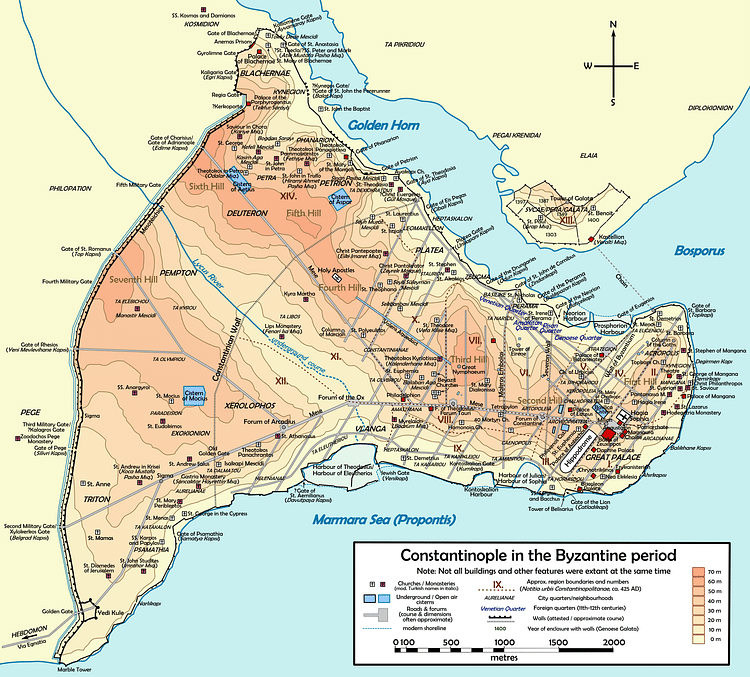
Built in the seventh century BCE, the ancient city of Byzantium proved to be a valuable city for both the Greeks and Romans.Because it lay on the European side of the Strait of Bosporus, the Emperor Constantine understood its strategic importance and upon reuniting the empire in 324 CE built his new capital there -- Constantinople.
FOUNDATION BY CONSTANTINE (284 - 337 CE)
Emperor Diocletian who ruled the Roman Empire from 284 to 305 CE believed that the empire was too big for one person to rule and divided it into a tetrarchy (rule of four) with an emperor ( augustus ) and a co-emperor ( caesar ) in both the east and west. Diocletian chose to rule the east. Young Constantine rose to power in the west when his father, Constantius, died. The ambitious ruler defeated his rival, Maxentius, for power at the Battle of Milvian Bridge and became sole emperor of the west in 312 CE. When Lucinius assumed power in the east in 313 CE, Constantine challenged and ultimately defeated him at the Battle of Chrysopolis, thereby reuniting the empire.
Constantine was unsure where to locate his new capital. Old Rome was never considered. He understood the infrastructure of the city was declining; its economy was stagnant and the only source of income was becoming scarce. Nicomedia had everything he could want for a capital --a palace, a basilica and even a circus-- but it had been the capital of his predecessors, and he wanted something new. Although he had been tempted to build his capital on the site of ancient Troy, Constantine decided it was best to locate his new city at the site of old Byzantium, claiming it to be a New Rome (Nova Roma ). The city had several advantages. It was closer to the geographic center of the Empire. Since it was surrounded almost entirely by water, it could be easily defended (especially when a chain was placed across the bay). The location provided an excellent harbor --thanks to the Golden Horn-- as well as easy access to the Danube River region and the Euphrates frontier. Thanks to the funding of Lucinius's treasury and a special tax, a massive rebuilding project began.
CONSTANTINOPLE WOULD BECOME THE ECONOMIC AND CULTURAL HUB OF THE EAST AND THE CENTER OF BOTH GREEK CLASSICS AND CHRISTIAN IDEALS.
Although he kept some remnants of the old city, New Rome --four times the size of Byzantium-- was said to have been inspired by the Christian God, yet remained classical in every sense. Built on seven hills (just like Old Rome), the city was divided into fourteen districts. Supposedly laid out by Constantine himself, there were wide avenues lined with statues of Alexander the Great, Caesar, Augustus, Diocletian, and of course, Constantine dressed in the garb of Apollo with a scepter in one hand and a globe in the other. The city was centered on two colonnaded streets (dating back to Septimus Severus) that intersected near the baths of Zeuxippus and the Testratoon.
The intersection of the two streets was marked by a four-way arch, the tetraphylon. North of the arch stood the old basilica which Constantine converted into a square court, surrounded by several porticos, housing a library and two shrines.Southward stood the new imperial palace with its massive entrance, the Chalke Gate. Besides a new forum, the city boasted a large meeting hall that served as a market, stock exchange, and court of law. The old circus was transformed into a victory monument, including one monument that had been erected at Delphi --the Serpent Column -- celebrating the Greek victory over the Persians at Plataea in 479 BCE. While the old amphitheater was abandoned (the Christians disliked gladiatorial contests), the hippodrome was enlarged for chariot races.
One of Constantine's early concerns was to provide enough water for the citizenry. While Old Rome didn't have the problem, New Rome faced periods of intense drought in the summer and early autumn and torrential rain in the winter. Together with the challenge of the weather, there was always the possibility of invasion. The city needed a reliable water supply. There were sufficient aqueducts, tunnels and conduits to bring water into the city but a lack of storage still existed. To solve the problem the Binbirderek Cistern (it still exists) was constructed in 330 CE.
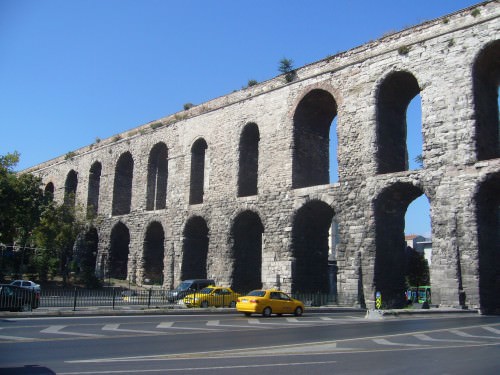
Valens Aqueduct, Constantinople
Religion took on new meaning in the empire. Although Constantine openly supported Christianity (his mother was one), historians doubt whether or not he truly ever became a Christian, waiting until his deathbed to convert. New Rome would boast temples to pagan deities (he had kept the old acropolis ) and several Christian churches; Hagia Irene was one of the first churches commissioned by Constantine. It would perish during the Nika Revolts under Justinian in 532 CE.
In 330 CE, Constantine consecrated the Empire's new capital, a city which would one day bear the emperor's name.Constantinople would become the economic and cultural hub of the east and the center of both Greek classics and Christian ideals. Its importance would take on new meaning with Alaric ’s invasion of Rome in 410 CE and the eventual fall of the city to Odoacer in 476 CE. During the Middle Ages, the city would become a refuge for ancient Greek and Roman texts.
CONSTANTIUS TO THEODOSIUS (337 - 526 CE)
In 337 CE Constantine died, leaving his successors and the empire in turmoil. Constantius II defeated his brothers (and any other challengers) and became the empire's sole emperor. The only individual he spared was his cousin Julian, only five years old at the time and not considered a viable threat; however, the young man would surprise his older cousin and one day becomes an emperor himself, Julian the Apostate. Constantius II enlarged the governmental bureaucracy, adding quaestors, praetors, and even tribunes. He built another cistern and additional grain silos. Although some historians disagree (claiming Constantine laid the foundation), he is credited with building the first of three Hagia Sophias, the Church of Holy Wisdom, in 360 CE. The church would be destroyed by fire in 404 CE, rebuilt by Theodosius II, destroyed and rebuilt again under Justinian in 532 CE.
A convert to Arianism, Constantius II's death would place the already tenuous status of Christianity in the empire in jeopardy.His successor, Julian the Apostate, a student of Greek and Roman philosophy and culture (and the first emperor born in Constantinople), would become the last pagan emperor. Although Constantinius had considered him weak and non-threatening, Julian had become a brilliant commander, gaining the support and respect of the army, easily assuming power upon the emperor's death. Although he attempted to erase all aspects of Christianity in the empire, he failed. Upon his death fighting the Persians in 363 CE, the empire was split between two brothers, Valentinian I (who died in 375 CE) and Valens.Valentinian, the more capable of the two, ruled the west while the weaker and short-sighted Valens ruled the east. Valens only contribution to the city and the empire was to add a number of aqueducts, but in his attempt to shore up the empire's frontier --he had allowed the Visigoths to settle there-- he would lose a decisive battle and his life at Adrianople in 378 CE. After Valens embarrassing defeat, the Visigoths believed Constantinople to be vulnerable and attempted to scale the walls of the city but ultimately failed.
Valen's successor was Theodosius the Great (379 – 395 CE). In response to Julian, he outlawed paganism and made Christianity the official religion of the empire in 391 CE. He called the Second Ecumenical Council, reaffirming the Nicene Creed, written under the reign of Constantine. As the last emperor to rule both east and west, he did away with the Vestal Virgins of Rome, outlawed the Olympic Games and dismissed the Oracle at Delphi which had existed long before the time of Alexander the Great. His grandson, Theodosius II (408 – 450 CE) rebuilt Hagia Sophia after it burned, established a university, and, fearing a barbarian threat, expanded the city's walls in 413 CE; the new walls would be forty feet high and sixteen feet thick.
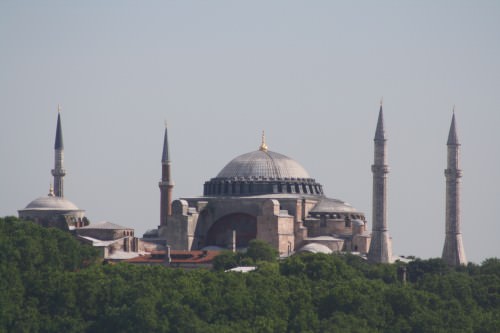
Hagia Sophia
JUSTINIAN & THE NIKA REVOLT (527 - 565 CE)
A number of weak emperors followed Theodosius II until Justinian (527 – 565 CE) --the creator of the Justinian Code-- came to power. By this time the city boasted over three hundred thousand residents. As emperor Justinian instituted a number of administrative reforms, tightening control of both the provinces and tax collection. He built a new cistern, a new palace, and a new Hagia Sophia and Hagia Irene, both destroyed during the Nika Revolt of 532 CE. His most gifted advisor and intellectual equal was his wife Theodora, the daughter of a bear trainer at the Hippodrome. She is credited with influencing many imperial reforms: expansion of women's rights in divorce, closure of all brothels, and the creation of convents for former prostitutes.Under the leadership of his brilliant general Belisarius, Justinian expanded the empire to include North Africa, Spain and Italy. Sadly, he would be the last of the truly great emperors; the empire would fall into gradual decline after his death until the Ottoman Turks conquered the city in 1453 CE.
One of the darker moments during his reign was the Nika Revolt. It started as a riot at the hippodrome between two sport factions, the blues and greens. Both were angry at Justinian for some of his recent policy decisions and openly opposed his appearance at the games. The riot expanded to the streets where looting and fires broke out. The main gate of the imperial palace, the Senate house, public baths, and many residential houses and palaces were all destroyed. Although initially choosing to flee the city, Justinian was convinced by his wife, to stay and fight: thirty thousand would die as a result. When the smoke cleared, the emperor saw an opportunity to clear away remnants of the past and make the city a center of civilization.Forty days later Justinian began the construction of a new church; a new Hagia Sophia.
No expense was to be spared. He wanted the new church to be built on a grand scale -- a church no one would dare destroy.He brought in gold from Egypt, porphyry from Ephesus, white marble from Greece and precious stones from Syria and North Africa. The historian Procopius said:
… it soars to a height to match the sky, and as if surging up from other buildings it stands as high and looks down on the remnants of the city … it exults in an indescribable beauty.
Over ten thousand workers would take almost six years to build it. Afterwards Justinian was reported to say, “ Solomon, I have surpassed thee.” Near the height of his reign, Justinian's city suffered an epidemic in 541 CE --the Black Death-- where over one hundred thousand of the city's residents would die. Even Justinian wasn't immune, although he survived. The economy of the empire would never completely recover.
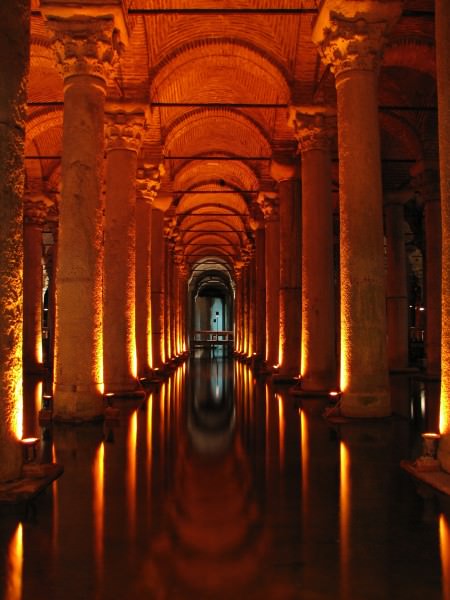
Binbirderek Cistern, Constantinople
MEDIEVAL CONSTANTINOPLE (UNTIL 1453 CE)
Two other emperors deserve mention: Leo III and Basil I. Leo III (717 – 741 CE) is best known for instituting iconoclasm, the destruction of all religious relics and icons --the city would lose monuments, mosaics and works of art-- but he should also be remembered for saving the city. When the Arabs lay siege to the city, he used a new weapon “ Greek fire ”, a flammable liquid to repel the invaders. It was comparable to napalm, and water was useless against it as it would only help to spread the flames. While his son Constantine V was equally successful, his grandson Leo IV, initially a moderate iconoclast, died shortly after assuming power, leaving the incompetent Constantine VI and his mother and regent Irene in power. Irene ruled with an iron hand, preferring treaties to warfare, aided by several purges of the military. Although she saw the return of religious icons (endearing her to the Roman church), her power over her son and the empire ended when she chose to have him blinded; she was exiled to the island of Lesbos.
Basil I (867- 886 CE), the Macedonian (although he had never set foot in Macedonia), saw a city and empire that has fallen into disrepair and set about a massive rebuilding program: Stone replaced wood, mosaics were restored, churches as well as a new imperial palace were constructed, and lastly, considerable lost territory was recovered. Much of the rebuilding, however, was lost during the Fourth Crusade (1202 -1204 CE) when the city was plundered and burned, not by the Muslims, but by the Christians who had initially been called to repel invaders but sacked the city themselves. Crusaders roamed the city, tombs were vandalized, churches desecrated, and Justinian's sarcophagus was opened and his body flung aside. The city and the empire never recovered from the Crusades leaving them vulnerable for the Ottoman Turks in 1453 CE.
LICENSE:
Article based on information obtained from these sources:with permission from the Website Ancient History Encyclopedia
Content is available under License Creative Commons: Attribution-NonCommercial-ShareAlike 3.0 Unported. CC-BY-NC-SA License